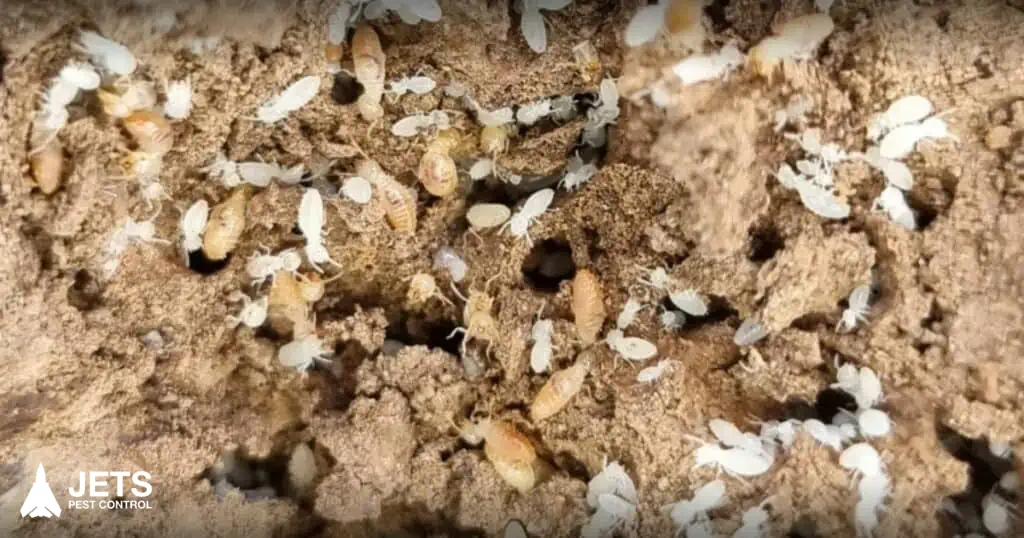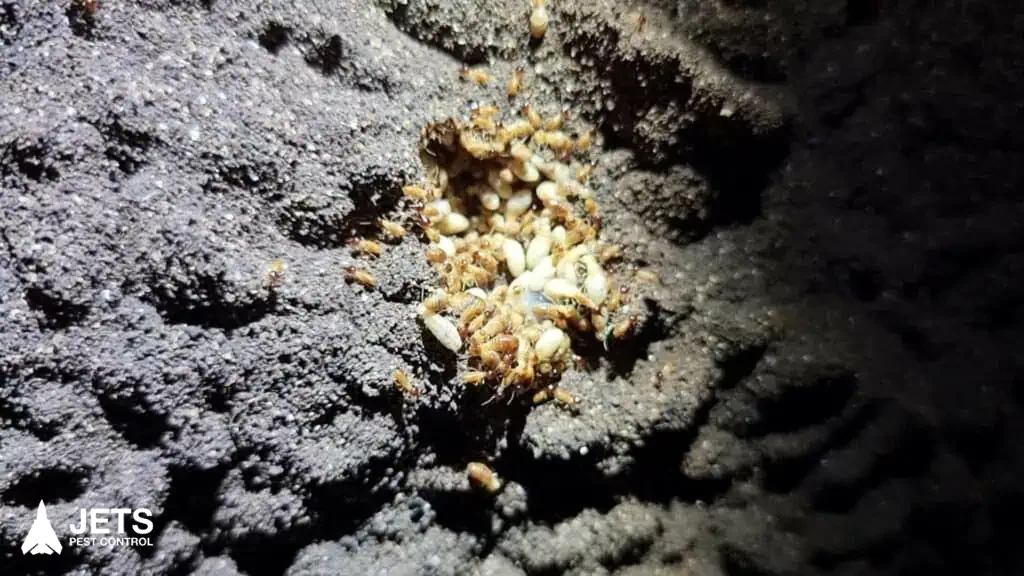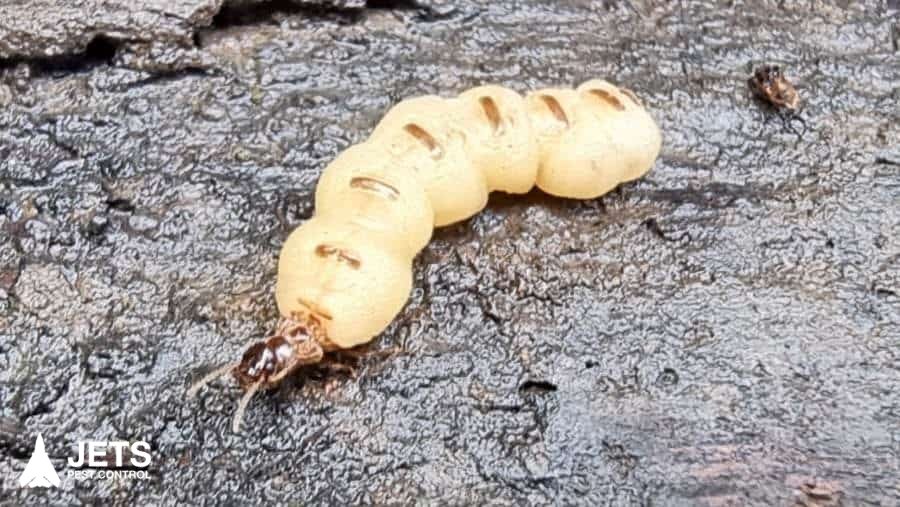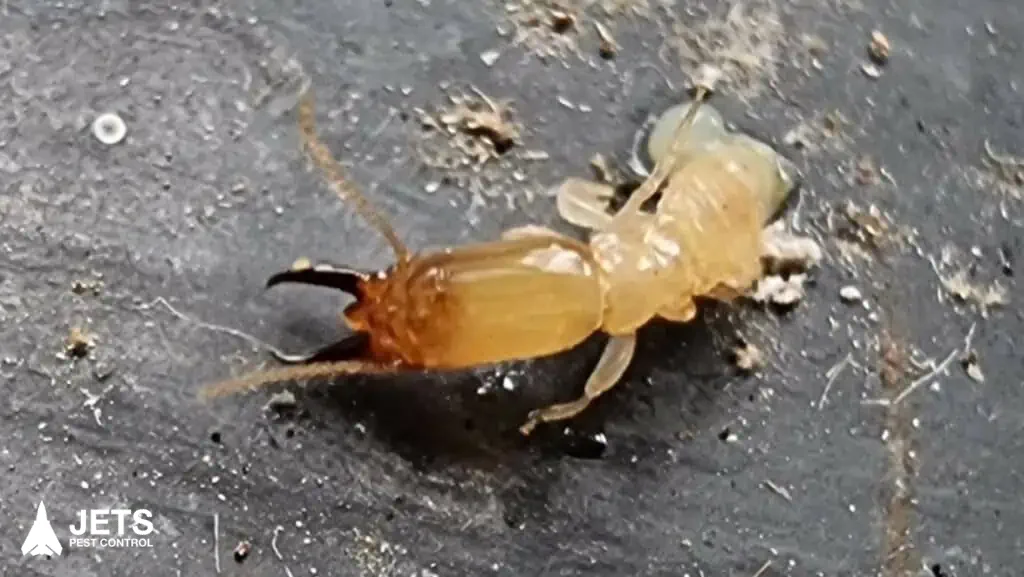Australia has over 300 species of termites, but only a few cause severe economic damage to homes. Most termites are vital for our environment to recycle decaying timbers and plant materials to improve the organic resources in the soil. They are also a source of food for many animals.
Termites live in colonies. The size of the colony is dependent on the species of termite. A colony of Ringant termites may only have a few hundred insects, whereas a mound-building species like Coptotermes could have hundreds of thousands or even millions of insects.
Some termites build mounds, some nest underground, while others live in small colonies in trees. Ground mounds, pole nests and tree nests are common sites in Ipswich and surrounding areas. Subterranean termite nests are generally not visible, yet the species cause the most damage to homes.
The first sign of termites in or around the home can often be after a colonising flight. Winged termites called Alates leave the colony, usually in early Summer, to establish new colonies. Once paired, the future Queen and King drop the winds and retreat to a small chamber where they mate.
It can take several years for a new colony to grow in numbers sufficient in strength to cause severe damage to a home. A termite Queen is long-lived, in some species, more than 25 years, continuously fertilised by the King and can lay upwards of 30,000 eggs per day at peak fertility.
Identifying the termite species in an infestation is crucial to providing the most effective long-term control of the pests.
What kind of termites are in Australia?
Three types of termites most commonly encountered in Australia are subterranean, drywood and dampwood termites. The main pest termites in Australia are:
- Coptotermes acinaciformis, subterranean termite
- Mastotermes darwiniensis, giant northern termite
- Cryptotermes primus
- Cryptotermes brevis, West Indian drywood termite
- Heterotermes ferox
- Schedorhinotermes intermedius
- Nasutitermes walkeri
- Microcerotermes turneri
What do termites eat in Australia?
Most termites consume decaying wood and dead plant matter, such as logs, twigs and leaves. Some termites eat fungus on plants that contains cellulose which is chewed and regurgitated to build termite mounds and feed other termites.
Not all termites eat wood. Many species feed on grass and are not pests in buildings. Those species that eat wood get cellulose, sugars, and starches from the sapwood of trees and eat any wooden structures, including logs, stumps, and homes.
What are the worse termites?
Coptotermes acinaciformis is the most destructive termite species in Australia for total economic damage. They are well known for causing widespread damage to homes. Mastotermes darwiniensis, the Giant Northern Termite, is more destructive locally, but its range is limited to northern Australia.
What attracts termites to a home?
Termites are attracted by carbon dioxide (CO2) released by decaying timbers and excessive moisture from leaking taps, broken pipes, air conditioners and hot water systems in and around a home. In huge numbers, termite workers forage blindly for food and water to locate new sources to sustain the colony.
How do you tell if termites are active in your house?
The most common signs of termites living in and around your house are sounds from headbanging termite soldiers in the walls or dress timbers and flying termites invading your space. Be on the lookout for mud and mud tubes with white ants inside, hollow-sounding paper-thin timber you can put your finger through. You may also find tight-fitting doors and hard-to-open windows affected by the moisture created by termites, galleries or tunnels in timbers from termites, and termite droppings called Frass.
A professional termite inspection is the first step to confirm if termites are active in your home.
Can termites ruin a house?
YES! It is estimated that termites cause more than $3 billion in property damage yearly. Repair bills from termite damage can be as low as a few thousand dollars to more than half a million dollars. In the worse cases, some homes must be demolished and rebuilt at great expense.
Do termites go away without treatment?
YES! Some termites will leave when disturbed, but they return soon after. Schedorhinotermes intermedius are well known for infesting homes and leaving once bothered only to return a few weeks later. Other termite colonies are known to use and follow the tunnels of other termites into a house.
We have seen two or three different species attacking one house. The termites will leave altogether once the food or water source is no longer available. Once termites have infested your home, the risk of a repeat infestation is forever greater and growing.
How hard is it to get rid of termites?
YES! Termites have been around for about 250 million years and actively contribute to our environment. While you cannot permanently remove termites from the environment, you can help prevent them from taking root in your home and control any active colonies nearby. A mature colony of termites can cause structural damage to a home within a few weeks of starting an attack on building timbers.
Our technicians are highly trained, licensed professionals skilled in termite colony control and elimination. Following best practices and using the safest chemistry and technology is the most effective way to eliminate termites.




